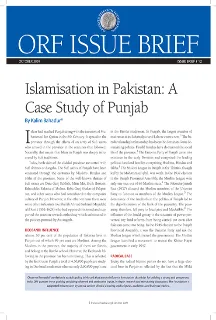-
CENTRES
Progammes & Centres
Location


Islam had reached Punjab along with the invasion of Muhammad Bin Qasim in the 8th Century. It spread in the province through the efforts of an array of Sufi saints who arrived in the province in the centuries that followed. Naturally, that meant that Islam in Punjab was deeply influenced by Sufi traditions.
Today, both sides of the divided province are dotted with Sufi shrines or dargahs. The Sufi saints of Punjab have been venerated through the centuries by Muslims, Hindus and Sikhs of the province. Some of the well-known shrines of Sufi saints are Data Ganj Bakhsh, Mian Mir, Shah Hussain, Bahauddin Zakaria of Multan, Baba Ganj Shakar of Pakpattan, and other saints who had contributed to the composite culture of Punjab.
However, at the other extreme there were some other Sufi saints like Sheikh Ahmad Sarhindi Mujaddid Alif Sani (1562-1624) who had opposed this trend and supported the reaction towards orthodoxy which culminated in the policies pursued by Aurangzeb.
The views expressed above belong to the author(s). ORF research and analyses now available on Telegram! Click here to access our curated content — blogs, longforms and interviews.

 PDF Download
PDF Download
